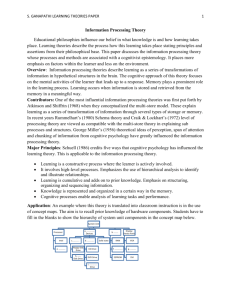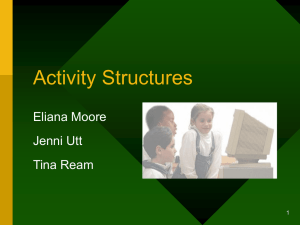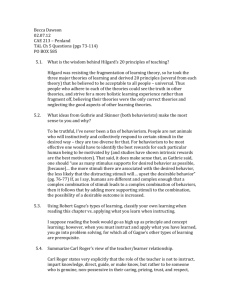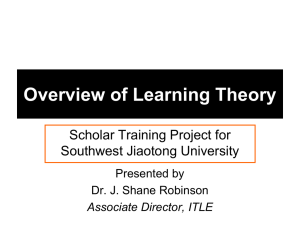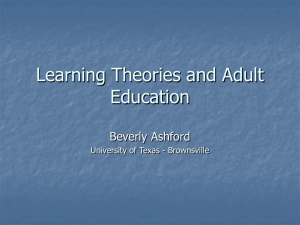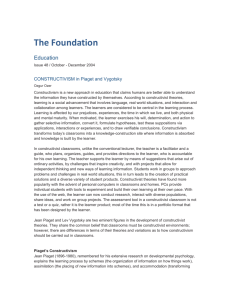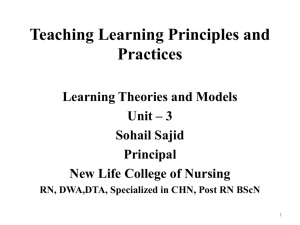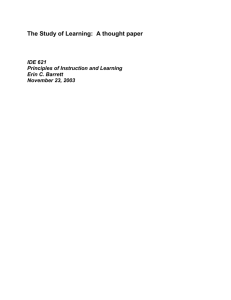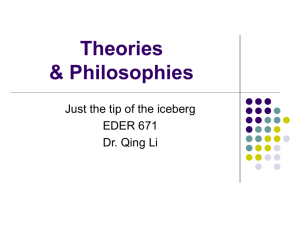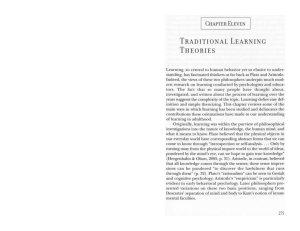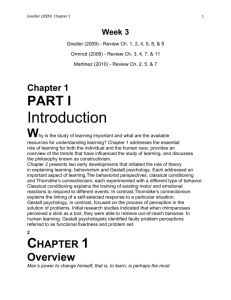Denise Vernstrom-learning theories
advertisement
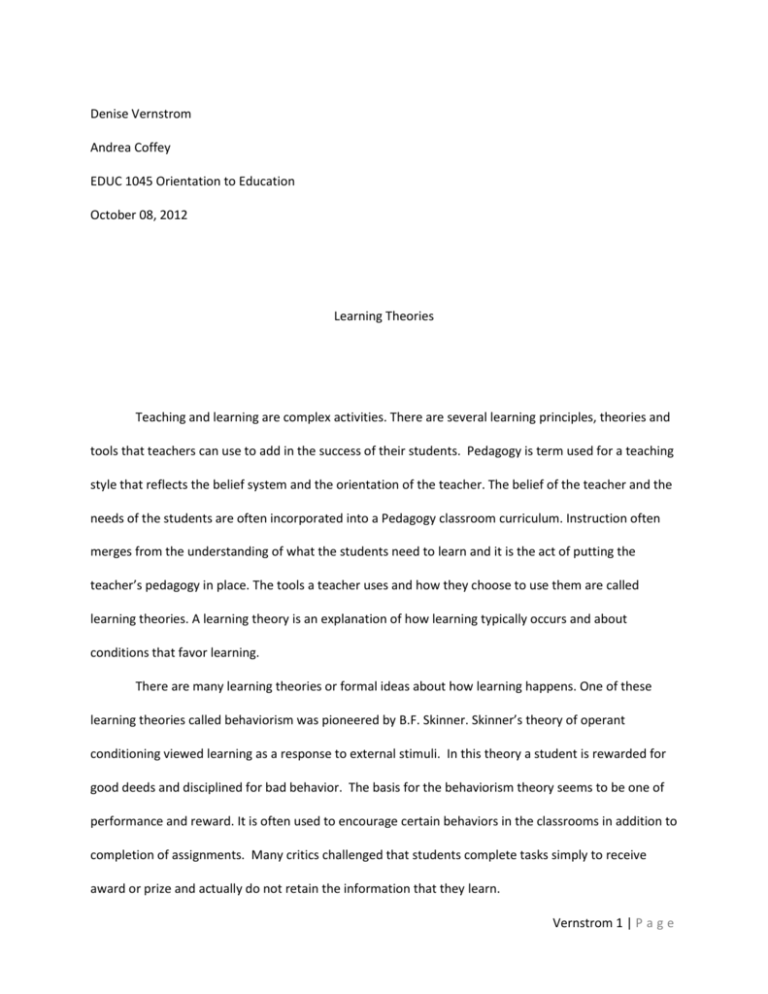
Denise Vernstrom Andrea Coffey EDUC 1045 Orientation to Education October 08, 2012 Learning Theories Teaching and learning are complex activities. There are several learning principles, theories and tools that teachers can use to add in the success of their students. Pedagogy is term used for a teaching style that reflects the belief system and the orientation of the teacher. The belief of the teacher and the needs of the students are often incorporated into a Pedagogy classroom curriculum. Instruction often merges from the understanding of what the students need to learn and it is the act of putting the teacher’s pedagogy in place. The tools a teacher uses and how they choose to use them are called learning theories. A learning theory is an explanation of how learning typically occurs and about conditions that favor learning. There are many learning theories or formal ideas about how learning happens. One of these learning theories called behaviorism was pioneered by B.F. Skinner. Skinner’s theory of operant conditioning viewed learning as a response to external stimuli. In this theory a student is rewarded for good deeds and disciplined for bad behavior. The basis for the behaviorism theory seems to be one of performance and reward. It is often used to encourage certain behaviors in the classrooms in addition to completion of assignments. Many critics challenged that students complete tasks simply to receive award or prize and actually do not retain the information that they learn. Vernstrom 1 | P a g e Jean Piaget is considered a key figure in another learning theory called cognitive. The cognitive learning theory took an “inside the head of the learner’ approach in considering the best way to educate a learner. According to Piaget there are different stages of development that happen because of mental structures that begin to emerge at different ages of a child. His “stages of development” theory is based on several research studies and interviews that he did in the 1920’s. His belief is that the child builds knowledge according to the sensory stage that they are at. His critiques argue that children learn at different rates and that their rate of learning is not dependent on their age. Some of Piaget’s critiques developed forms of social learning theories that are now called social cognitive learning theories. One important social cognitive theorist was Lev Vygotskyn who believed that context influences the ideas that people develop. He believed that learning involves interactions between the learner and the social environment in which they live. Many social cognitivists stress the importance of modeling . In this theory students would learn by observing the teacher and then doing the activity themselves. It a lead by example approach to teaching, meaning the teacher would demonstrate the activity and then the student would duplicate it, in theory. Constructivism is a student centered learning theory that believes that knowledge is not passively received, rather, it is actively built by the learner as he or she experiences the world. Constructivism is a learner-centered theory that includes a concept called mental schemes as part of its theory. Mental scheming is the act of organizing information and concepts in the brain to help a learner make sense of the information that they are learning. A teacher can teach the skill of mental scheming by using bullet points or bold heading on a paper to help the learner sort and categorize the information. In this theory it is important to understand the frame of reference or understandings that the learners have. Constructivist teachers try to activate students’ prior knowledge so that they can build on what they already know. Students can then be challenged on what they know and the knowledge can be refined. Vernstrom 2 | P a g e If I we to personally have to choose a learning theory in which to teach, I would choose the constructivism theory. I have found that the level of skills and learning a person has are not always contingent on age, sex, or ethnicity. I agree with the cognitive stages of learning and I feel that educators should understand them when formatting curriculum for their classrooms. I think it is important to “gauge” your audience, so to speak. I would prefer to use the constructivism theory; however, as I am more of a “hands on” learner and I believe that many students prefer this method as well. I am currently a hiring manager for a large retail company. In an increasingly diverse community the task of interviewing, hiring, and training is a challenge due to the level of understanding each candidate has. We offer CBT training in several languages but the learner still has to have a basic foundation of understanding in area in which they are being trained. In addition we offer all of our new associates study guides and buddy training activities that pertain to the position they are hired in. I have found that the ‘on hands” buddy training experience that we offer them is the most beneficial to them. The idea of “show me” don’t just tell me usually helps when language and cultural frame of reference may otherwise alter the learners understanding. I would prefer not to use the behavior theory as it fosters performance orientation. I feel the only purpose for this theory would be to set standards for classroom behavior. May concern is always for the student that is giving 110% but for some reason is still not succeeding at the expected rate. In a behavior theory classroom some students may decide to stop trying when they fail to receive the rewards and recognition that other students are receiving. I just stated a student service learning assignment for one of my other classes. The teacher that I have been partnered with uses the” building model schemes” approach in her math class and more of a cognitive theory approach in her reading classes. I love the experience and the opportunity to see this models and theories being used in the classrooms. Vernstrom 3 | P a g e Vernstrom 4 | P a g e
